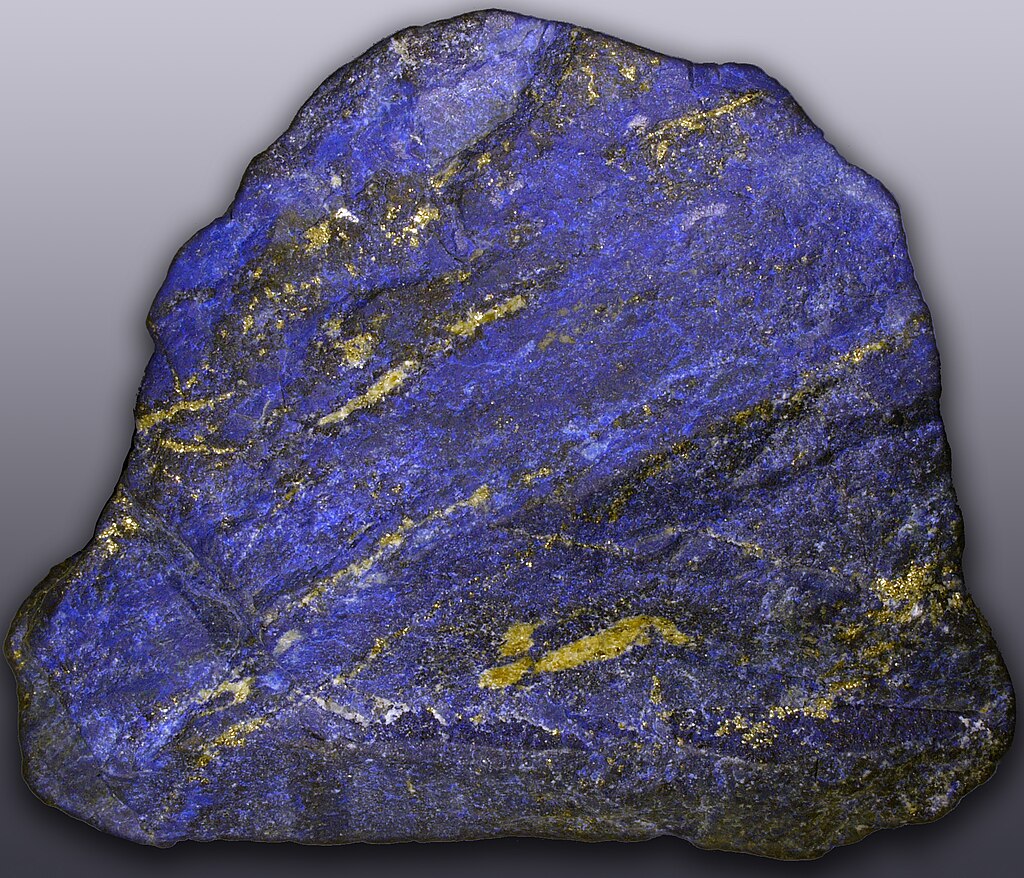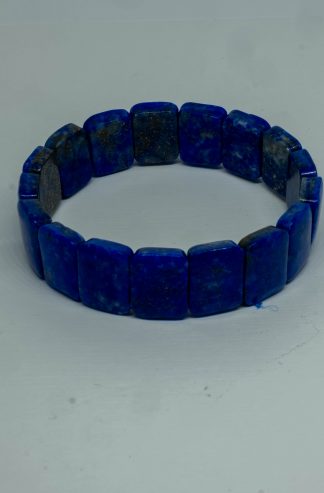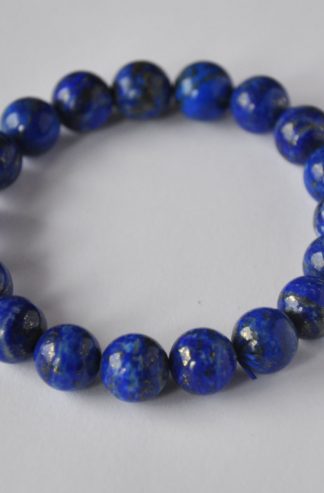Our current Lapis Lazuli items
Physical make up of lapis lazuli
The predominant mineral component of Lapis Lazuli is Lazurite, which takes up 25% to 40% of a typical stone. other then this it can contain varying degrees of calcite, which will appear wite, sodalite, which will appear blue, or pyrite which is also called fools gold and will appear like a metallic yellow. Lapis lazuli has been refined and crafted into jewelry for millennia.
Historical usage
It’s a stone that is prized for its deep blue striking color. The word lazuli comes from the Arabic term “Lazward” from which the word azure comes. Which in the west of course is associated with a deep blue color. The Ancient Romans used to call it “Sapphires” but this of course changed when todays Sapphires became widespread enough. But Lapis Lazuli’s history goes back even further, to ancient Egypt. The Egyptians regarded Lapis Lazuli as a heavenly stone. And it was often incorporated into burial masks. Such as those of King Tut and Tutankhamen.

Coveted as far back as 7000 years B.C.
But this stone is even mentioned in the Epic of Gilgamesh 2650 BC making it the stone with one of the longest track records in human history. There have even been indications that the Indus valley people placed great significance on this bluestone. It has been found in burial sites all scattered in a great distance from the Caucasus mountains to Mehrgarh in Pakistan and of course Egypt. There have even been found mines as old as 7000 years B.C. in Afganistan near Sar-i Sang where this stone was mined.
During the middle ages, most patrons wanted their paintings painted with Lapis pigments which were grounded up and refined into a pigment known as “Ultra marine”. Men of lesser means were forced to resort to copper and other sources. Probably it’s rarity and the prestige factor were a consideration when choosing this material. It only became known in Europe during the crusades and was only available to the richest of patrons. Prominent among these were the Medici who built up a unique collection of various objects made of Lapis lazuli.
Myths legends and attributes ascribed to lapis lazuli
Lapis has been known for millenia to be a stone that connects one with ones innerself. It is said to raise intuiton, awarness and connection with ones innerself. it also has a protective quality to it and is great for meditiation


